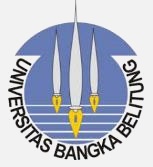THE USE OF MEDIA AND LEARNING METHOD VARIATIONS TO IMPROVE STUDENTS' ABILITY IN IDENTIFYING INTRINSIC ELEMENTS OF POETRY IN CLASS V SDN JATIMULYA 02 BEKASI REGENCY
Abstract
The appropriate method can increase the effectiveness of learning in schools. Even easy subject is sometimes difficult to be developed and be accepted by students because the method used is not appropriate. Therefore, this study discusses several variations of learning methods in improving the ability of elementary school students to understand the intrinsic elements contained in poetry. This research is a quantitative study with a Pre-Experimental Design approach in the form of One Group Pretest-Posttest Design. This research was conducted at SDN Jatimulya 02, South Tambun, West Java. The data sources in this study were fifth-grade students at SDN Jatimulya 02 as the sample and the population consisted of 61 students, consisting of 36 girls and 25 boys. Data collection techniques using observation and test techniques. The observations made in this study were participatory because the researchers were directly involved. In this study, the researcher involved himself in the situation under study, namely as a teacher. Researchers used three types of assessments in this observation, namely an assessment of the Learning Implementation Plan (RPP), an assessment of the implementation of learning, and an assessment of student tests or evaluations (cycles). The activeness of students in the class became the object of observation. The use of questionnaires was also carried out, to determine the effectiveness of students in learning Indonesian. The questionnaire is a list of written questions that must be answered to obtain certain information from students. The questionnaire is made based on a questionnaire grid that refers to the formulation of the problem. The test is used to measure students' abilities in cognitive aspects, or the level of mastery of learning materials. The process of implementing the learning outcomes test is carried out after the discussion of one subject has ended, or after one quarter or one semester has been completed. Based on the results of the study, it can be interpreted that the use of media variations and learning methods affects students' listening skills in identifying intrinsic elements. This is evidenced by the completeness of students' scores at the beginning of the test and the end of the test. In the implementation of the initial test, there were 41% of students did not complete it. However, in the final test, 100% of students were declared complete or reached the KKM.
Downloads
References
Aminuddin. (2010). Apresiasi Karya Sastra. IKAPI.
Apriliani, S. (2016). Meningkatkan Kemampuan Mengidentifikasi Unsur Intrinsik Cerita Pendek Menggunakan Model Cooperative Integrated Reading And Composition (Circ) Di Kelas Iv Sd. 1–11.
Depdiknas. (2006). Kurikulum 2006 Standar Kompetensi dan Kompetensi Dasar Bahasa Indonesia Sekolah Dasar. Depdiknas.
Lauma, A. (2017). Unsur-Unsur Intrinsik Cerita Pendek “Protes” Karya Putu Wijaya. Https://Media.Neliti.Com/Media/Publications/185439-ID-None.Pdf.
Maesaroh, S. (2013). Peranan Metode Pembelajaran Terhadap Minat Dan Prestasi Belajar Pendidikan Agama Islam. Jurnal Kependidikan, 1(1), 150–168. https://doi.org/10.24090/jk.v1i1.536
Nazarius, A., Asran, M., & Margiyati, K. Y. (2014). Peningkatan kemampuan menyimak menggunakanmedia audio disekolah dasar. 1–11.
Purwahida, R., Sayuti, S. A., & Sari, E. S. (2010). Pembelajaran Sastra di Kelas X Rintisan Sekolah Bertaraf Internasional SMA Negeri 8 Yogyakarta. Jurnal Penelitian Humaniora, 11(1), 18–30.
Suhita, S., & Purwahida, R. (2018). Apresiasi Sastra Indonesia dan Pembelajarannya. Bandung: Remaja Rosdakarya.
Rampan, K. L. (2009). Apresiasi Puisi Indonesia Mutakhir. Bukupop.
Resmini, Novi, Yayah Churiyah, dan N. S. (2009). Membaca dan Menulis di SD: Teori dan Pengajarannya Bahan Belajar Mandiri. UPI Press.
Riski Puspita Sari, Martono, A. W. (2014). Kemampuan Mengidentifikasi Unsur Instrinsik Puisi Siswa Kelas XI SMA Negeri 1 Semparuk. Angewandte Chemie International Edition, 6(11), 951–952., 1–11.
Sudjiman, P. (2006). Kamus Istilah Sastra. Universitas Indonesia.
Sulastri, A. (2010). Peningkatan Kemampuan Mengidentifikasi Unsur-Unsur Intrinsik Dongeng dengan Metode Jigsaw Pada Siswa Kelas V SDN Bandardawung 03 Tawangmangu Tahun Ajaran 2009 / 2010. 1–85.
Susanti, W. (2016). Penggunaan Media Film Animasi The Improvement ff Children Stories Listening Skill Through Animation. 904–912.
Syafruddin. (2012). Pendidikan dan Pemberdayaan Masyarakat. Perdana Publishing.
Tarigan, H. G. (1986). Menyimak Sebagai Suatu Keterampilan Berbahasa. Percetajan Angkasa.
Trinil Dwi Turistiani. (2017). Jurnal Pena Indonesia (JPI) Jurnal Bahasa Indonesia, Sastra, dan Pengajarannya. Jurnal Pena Indonesia, 3(2), 130–146.
Copyright (c) 2021 Owned by the Author(s), published by Berumpun: International Journal of Social, Politics and Humanities

This work is licensed under a Creative Commons Attribution 4.0 International License.









